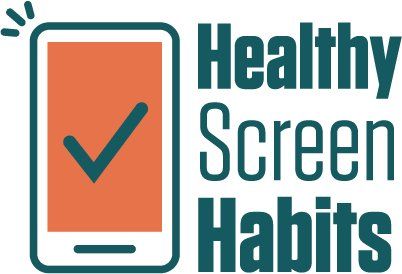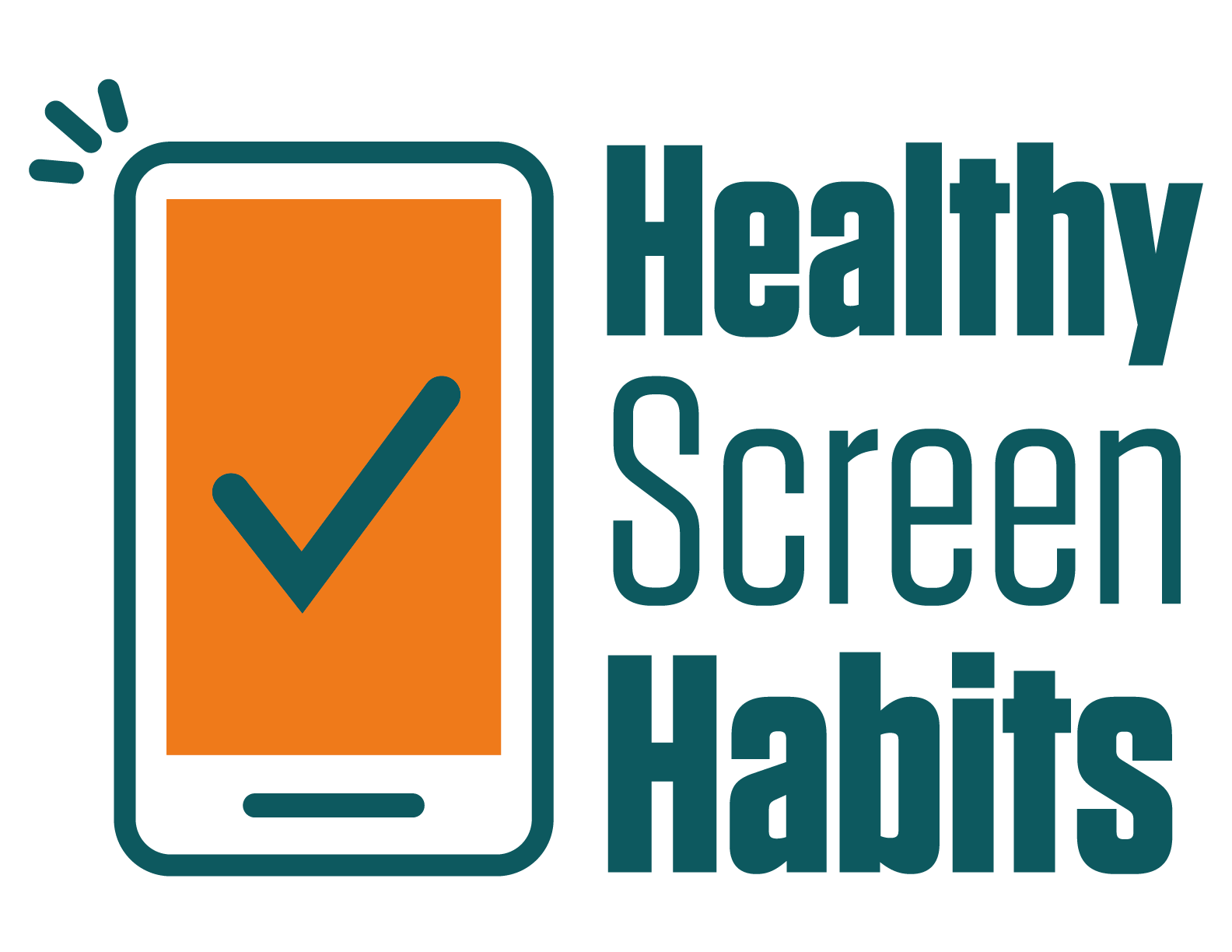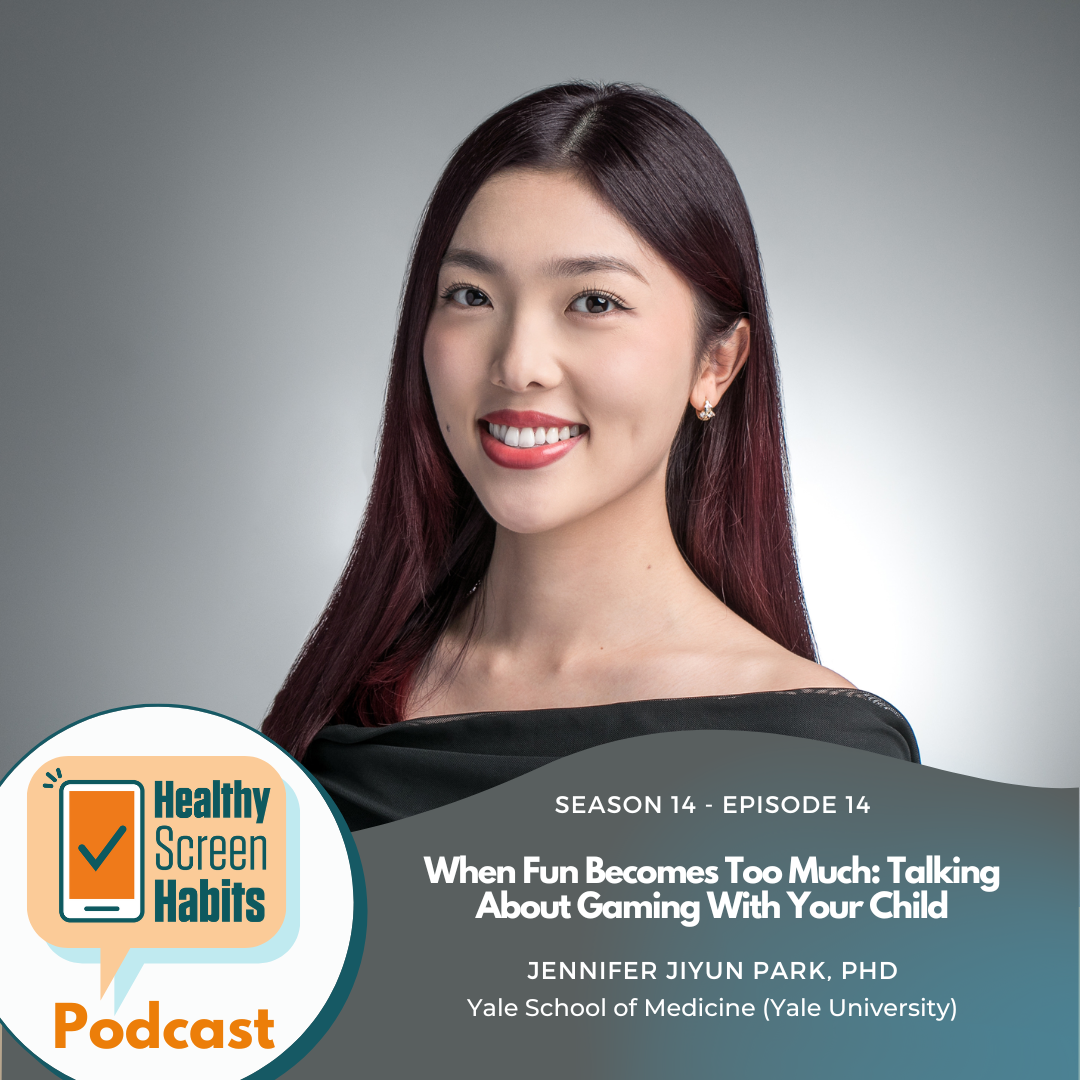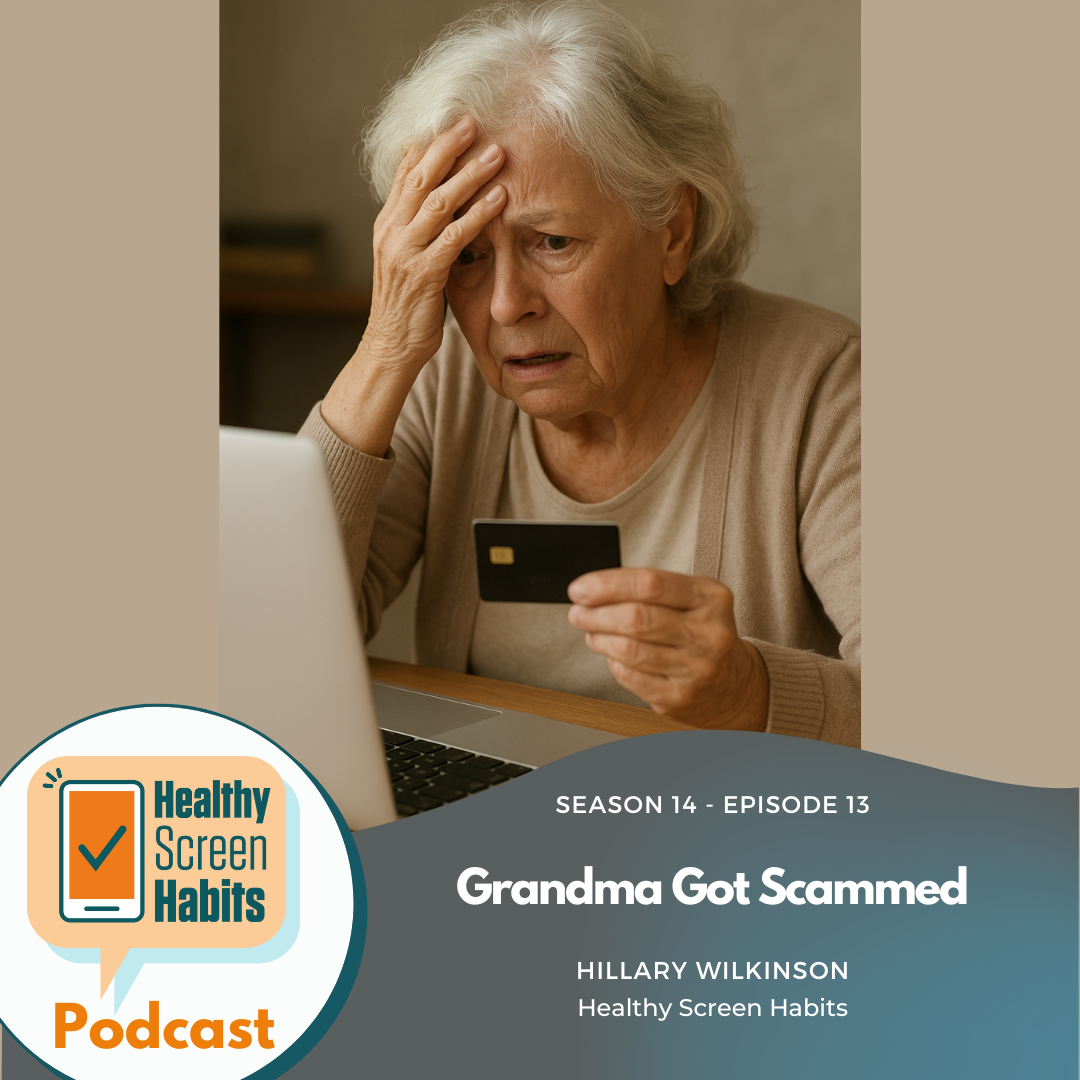S14 Episode 3: Let’s Grow Brain P.O.W.E.R.!! //Kailan Carr & Katie Talarico
Hosted by Hillary Wilkinson
"Screen time is not evil and bad, but we wanna make sure we're doing the important things first."
~Kailan Carr
Early childhood experts Kailan Carr and Katie Talarico have combined forces to create a FANTASTIC AND FREE new resource for parents and teachers!
“Let’s Grow Brain P.O.W.E.R.!” is a free resource for schools and community groups, and families designed to help educate and empower families to focus on what really matters for kids' healthy development. It gives the framework for kids to have experiences and skills that they need to thrive and to grow their brains.
They did the research, work, and design to create everything YOU need to help your children grow and build their most POWERFUL brains!
Listen now!
Healthy Screen Habits Takeaway
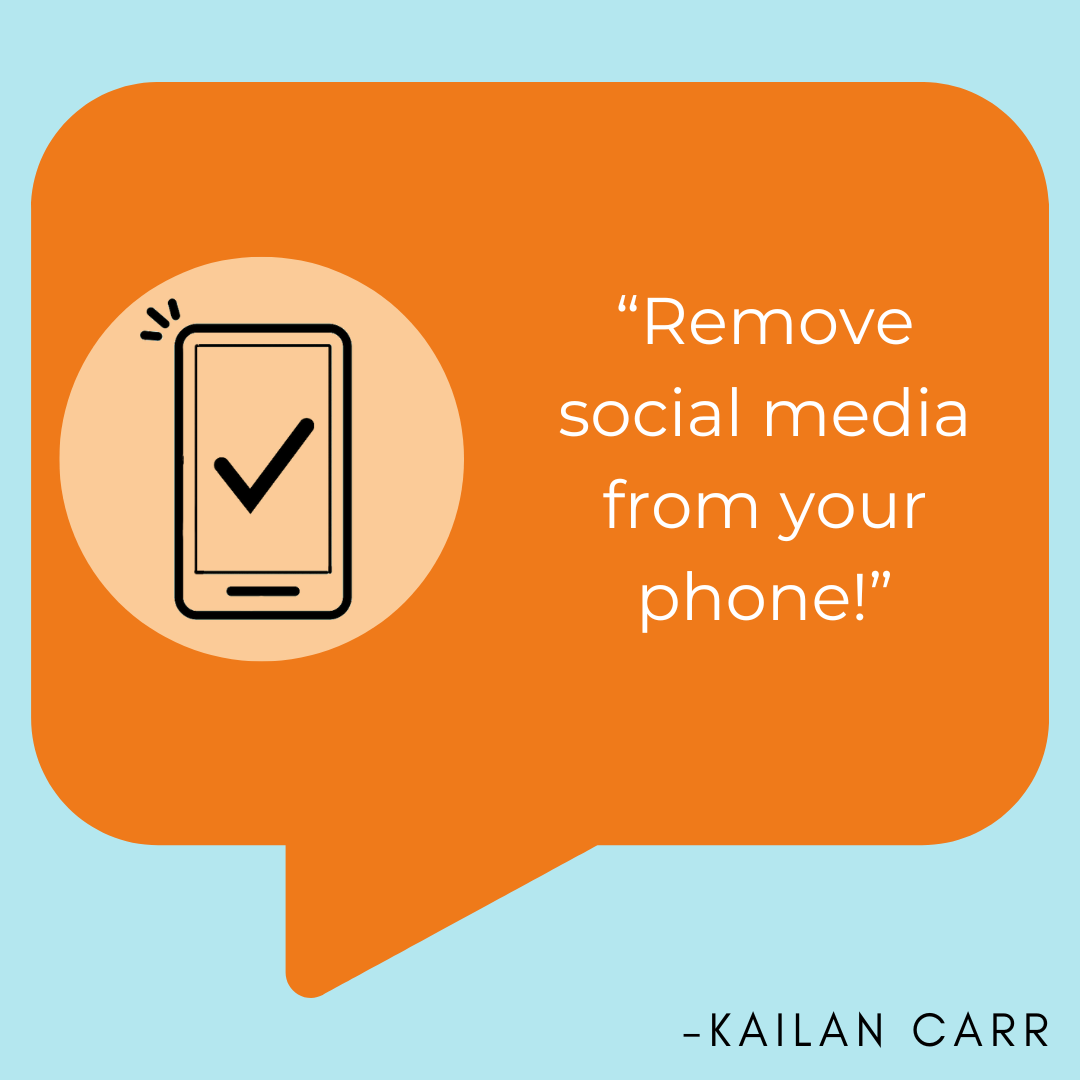
Resources
For More Info:
https://www.letsgrowbrainpower.com/
Resources Mentioned:
Book:
Screens Away Time To Play! By Kailann Carr
https://www.amazon.com/Screens-Away-Time-Play-Kailan/dp/B0CPSQC9CL
Podcast:
HSH Podcast Episode with Dr. John Hutton
https://www.healthyscreenhabits.org/s9-episode-1-whats-the-matter-how-baby-and-toddler-brain-development-is-affected-by-screen-time-john-s-hutton-md
HSH Podcast Episode on Persuasive Design:
https://www.healthyscreenhabits.org/s12-episode-7-silicon-valleys-secret-sauce-richard-freed-phd
Websites:
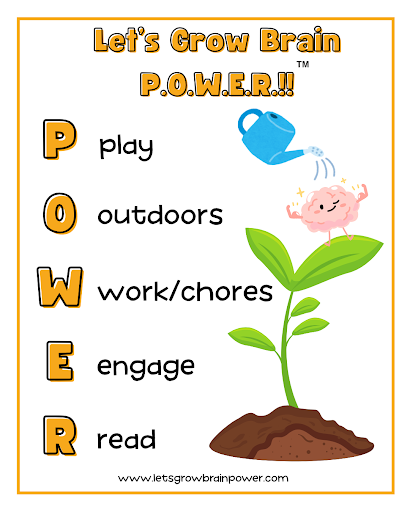
Show Transcript
Hillary Wilkinson: (00:02)
When we think about early childhood and childhood, I think there is no better word that sums up this period of development than growth. Physical growth happens so quickly right in front of our eyes that a lot of times we even, you know, chart it on our door jambs, or in my house. We have a board that's traveled with us from house to house as we've moved around. And the growth that we don't see, however, is explosive and happening at an equally rapid pace. That's the growth in brain development. And my guests today are specialists in recognizing the power of brain growth and the importance of an intentional blueprint. Both are former classroom educators holding advanced degrees in education, and both are equally passionate about encouraging kids to recognize their full potential. I'm really excited to introduce a new resource they've created called Let's Grow Brain P.O.W.E.R.!. It's designed to make it super easy for teachers and parents to get kids excited and exploring their physical world. Thank you so much for being here today, Kailan Carr and Katie Talarico.
Kailan Carr: (01:25)
Thank you so much for having us.
Katie Talarico: (01:28)
Thank you very much.
Hillary Wilkinson: (01:29)
So true confession time. I knew I was going to love this tool from the very first moment that I heard about it, because Kailan is also the author of my favorite picture book about healthy screen habits called Screens Away, Time to Play. Everyone should Get It and is absolutely gifted at designing activities and resources for kids that are so cute, but designed with intention. And Katie is a certified digital wellness educator and passionate advocate for healthy child growth and development. In short, they are a dream team. What is Let's Grow Brainpower and what led you guys to create it?
Katie Talarico: (02:39)
Okay. Uh, this is Katie. I'll start out with this question. Um, now in general, Let's Grow Brain Power. I'm just gonna give a few details and then Kailan will go more into it a little bit later. But let's Grow. Brain Power is a free resource for schools and community groups and even families that's designed just to help educate and empower kids and families to focus on what really matters for kids' healthy development and to give kids the experiences and skills that they need to thrive and to grow their brains. And these, we call the Power Activities, and Power is an acronym, and each of the letters stands for something. So P is play O stands for outdoors, W stands for work or chores. E stands for engage, and R stands for read. So, uh, Kailan will tell you a little bit more about what's in the resource and how it can be used.
Katie Talarico: (03:42)
Um, but we basically designed it for three reasons. One was that we wanted to be part of the solution, and we wanted to focus on the positive. So there's a big problem out there, and anybody listening to this podcast already knows, you know, there's a lot of research about kids and screens. And at this point I think parents really need solutions and teachers, everybody, we all do adults too. , mm-hmm and kids. And rather than focus on how screen time is bad and how it harms kids, we wanted to focus on the activities that are good for kids and how they help them. And then second, we wanted to provide a simple and memorable framework for parents, kids, families, teachers, to remind them about what kids really do need to grow and thrive. It's sort of a framework that gives them a way to think about how to fill kids' days.
Katie Talarico: (04:37)
Um, and then third, we wanted to help children and families to do the opposite of what John, Dr. John Hutton's research was showing. And that was less developed white matter in the brains of preschoolers. So this was some research that really upset me when I learned about it. And in fact, a lot of what I learned about it was from this podcast. I'm so flattered! Hillary interviewed Dr. John Hutton. I think I listened to it over and over. Um, so we have, you know, Dr. John Hutton's research showing less developed white matter, but we also have brain science, which shows us how to develop white matter. And that's through practice and repetition. So everything that kids do, um, and everything that they repeat doing not only builds pathways in the brain, but then it strengthens those pathways, and kids become better at those activities. The pathways become more robust and literally build myelin around the connection. And that is the white matter. So, um, and we also have decades of research about all these power activities showing us that they are the things that provide kids with the experiences and skills that they need for to thrive and that they'll need for their futures no matter what that future looks like.
Hillary Wilkinson: (06:02)
I love it. I love that it's research-backed, but actionable tools, because I'm with you. I feel like people, people are convinced, people know, okay, I need to be doing something different than screen time. But you guys have kind of like unlocked this key on like, okay, so what, what, what do we do? When you, um, kind of envision this going out in the world, you're who, like, how do you see it unfolding? The, I'm, I'm trying to be very, um, sneaky and I'm not being doing a very good job and getting you to describe these cute bulletin boards. , yeah. Okay. .
Kailan Carr: (06:46)
And this is Kailan and I will do my best now to explain what it actually is. And before I do that, you can go to Let'sGrowBrainPower.com, and that is where the free resource lives and you can download it and, and see what it's all about. But basically the main idea is for a community group, a classroom, a school to celebrate screen free, fun and these activities and build a brain, flower, brain power, flower, garden, , or you can choose a tree. And so students and, and families, we have these templates and patterns for flower petals, and they can write what screen-free activity they do at home, what they've done at school, and you build this garden or this tree with all these leaves and kind of build this community effort of growing your own brain power. And the resource also comes with full instructions for the, uh, whoever's organizing it and a parent letter.
Kailan Carr: (07:49)
So parents are understanding, lesson plan for teachers to introduce brain power. And then we've got activity ideas for each of the letters, coloring page activities for the kids, the templates that I mentioned, read aloud, book list, and like all the research too. There's a big research list that that shows what the background is. And we envision this to be used however, , anyone else feels like it would be a good use. Uh, we, we know Katie actually started this in her own preschool classroom and did it as like a family, um, for open house. It was like a bulletin board that parents, came in and added their leaves to the trees. It can be a, so just inside a classroom or it can be a school-wide activity, uh, where if you're in a preschool, you come into the office, the director's area, or it can be in like a cafeteria at an elementary school.
Kailan Carr: (08:52)
We have designed it for TK all the way up to like sixth grade elementary because it's all so important throughout that whole age group. You could do it for parent nights and have like brain power parent activity, open house digital wellness week where you're like, just focusing on how to be healthy with our screens. Screen free week is at the end of May, so you could celebrate it that way. And we also would like to develop, a poster that can be hung in, you know, classrooms, pediatrician offices, uh, homes. Um, so again, that's at let grow brainpower.com
Hillary Wilkinson: (09:40)
And I will have all of those links in all of the show notes. What I love also is it's like, it goes beyond just an individual experience and really it builds excitement in the community as you get to watch this garden bloom and watch this tree leaf out. I love it. And I was going to, I just want to reemphasize, ladies, what's the cost of this amazing tool?
Kailan Carr: (10:15)
Totally free!
Hillary Wilkinson: (10:17)
Exactly. They're saving the world and they're doing it for free. I mean, truly, truly dream team status. So we have to take a quick break, but when we come back, we're going to learn the meaning behind each of the letters in the word power.
—---------------------------------------
Ad Break: HSH & Digital Momming Safe Social Media? Plug
—-----------------------------------------
I'm speaking with Kalyn Carr and Katie Talarico, the creators of Let's Grow Brain Power, a resource that helps schools, organizations, and others encourage families to prioritize the critical things kids need to grow and thrive. So now anyone who has ever written anything or developed a new product or create an organization knows that names are important, and this name has a specific importance because each letter of the word power stands for something like Katie was talking about before the break. So now let's go through the spelling and hear what each letter stands for. So starting with P, what does P stand for?
Kailan Carr: (11:47)
Okay. This is Kaylyn and P is play. So that is for centuries, the foundation of child development is through play. That is how kids grow and learn, and they improve their physical and mental health through play. It builds resilience. It strengthens so many foundational skills like problem solving, critical thinking, creative thinking, communication and imagination, we can go on and on. The play is so very important. And so even if you're four years old or if you're 12 years old, play is important. If you are 42 years old, play is important. It's just different, but it helps us so much.
Hillary Wilkinson: (12:37)
Excellent. And, um, yeah, I like the emphasis and the, you know, play the, the need for play does not go away with the age . It's, it's a, a key indicator of mental health. Uh, actually. So let's go on to O. We've got P now O
Katie Talarico: (12:58)
Okay. O. This is Katie again. , uh, O stands for outdoor time and, um, outdoor time. It boosts mental health. Just literally being outside and in touch with nature does something to the central nervous system, and it, uh, lowers stress, raises mood, increases focus, and allows us to sleep better. So that's for everybody, and especially for kids. Um, boosts physical health. There's more space to run around and do things, supports cognitive development and improves vision. And then the outdoor time also mediates some of the negative effects of screen time. So a study found that kids, that even if they were spending time on screens, kids that were outside more showed less of the negative effects. Though I kind of love that, it's so, it's like you don't have to freak out if your kids have been on watching TV all morning, just say, go outside. Like, let's, let's make this better right now. Right. . Um, and also if you're playing outside with somebody else, then you have all the benefits of play that Kailan was talking about helps with social development, communication, language, problem solving, um, dealing with difficult emotions, et cetera. Yeah, it's just so much.
Hillary Wilkinson: (14:18)
I love it. Can you, I, you know, it's funny so many times when we talk about, um, screen habits and all of that, one thing that's kind of getting overlooked on with kids specifically is this whole concept of ocular health or vision. Can you talk about that a little, a little bit more about why outdoor play helps vision?
Katie Talarico: (14:46)
Well, I, you know, I'm not sure that I could go into the details right now, but I know that looking a certain distance away from you, um, helps to settle, you know, everything that's going on in the eye. But then, um, looking at a screen that tends to be close to you, and it has the pixelation and the quick movement and the bright lights, it, it, um, you know, throws your vision off a little bit. So I don't specifically know the science off the top of my head, but,
Kailan Carr: (15:17)
And I also could add that the sun really helps with developing the, the vision. I also am not super know knowledgeable.
Hillary Wilkinson: (15:28)
I've read it, none, none of us are ophthalmologists here, but , yeah.
Katie Talarico: (15:31)
But yeah, but the blue light immediately affects your circadian rhythms. Mm-hmm . So I know that's, that's one problem with, um, the screens. And then being outside is, you know, completely opposite. You have a full spectrum of light. So, um, for eye health and I guess macular degeneration has even been implicated
Hillary Wilkinson: (15:53)
With Yeah, yeah. No, and I know, I know the, um, the levels of nearsightedness has just been skyrocketing globally. Mm-hmm . And that's because we are not encouraging enough long distance viewing of mm-hmm . You know, things. So there's that 20-20-20 rule, which they say every 20 minutes you've got, or you take a, a 22nd break and look at something that's 20 feet away. Boy, I really had to stumble over that. , but , yeah. Yeah. So, um, but being outside it magically, you know, shifts everything in your vision. Well,
Kailan Carr: (16:37)
It's, it's natural. It's what we've, again, everything we, it's what we've been doing for years and years and years. And since we've now are all of a sudden on screen so much more, we're realizing, oh, all those natural things we've been doing, those are actually really, really beneficial. And now screens are just getting in the way of the simple, daily important tasks.
Hillary Wilkinson: (17:02)
Yeah. Yeah.
Katie Talarico: (17:03)
Just before we got on here, I was taking my dogs out and there were some kids scootering down the road, and there was about three or four of them, and they had the biggest smiles on their faces. They were laughing, so obviously their moods were elevated by riding these scooters fast. And one of them sort of fell, and her, she had flip flops on, which probably isn't the best with scooters, but hey, she was out there, it's okay. And her brother comes over and helps her get her scooter up and helps her put her shoe back on. And I was actually thinking, look how many things I just saw in, this just happened 15 seconds interaction that I saw. The empathy, the communication, I heard them talking, the physical activity, the mental health, so,
Hillary Wilkinson: (17:46)
And resilience of like, “oh yeah, I fell down, but now I get back up and I try it again.” Mm-hmm .
Katie Talarico: (17:51)
You're right.
Hillary Wilkinson: (17:51)
And yeah, no, I love that. So let's move on to W we've got PO and now we're on W
Kailan Carr: (18:00)
And this is Kailan and W stands for work, but also known as Chores for the Kids. . So it's not as fun as the other things, but it's equally as important because you are giving them a sense of responsibility, and they are helping out around the house, giving them ownership, um, which increases their sense of belonging. You're building life skills that they will need to know as they grow older. And, um, you're building a strong work ethic and their self-esteem, knowing that they can do more, they can take care of things themselves, and it builds resilience to frustration and adversity.
Hillary Wilkinson: (18:39)
I completely agree. And yeah, the thing, chores are kind of magic. And I know that every kid listening is going, “Aw man!” . But honestly, chores build competence. And competence builds confidence. And confidence makes it so that people want to approach you. You know, I mean, there's a, there's kind of like unwritten social things where it's like you see a confident person and you wanna be near that mm-hmm . It's, you know, um, and so that in turn insulates against loneliness 'cause you're so chores, man. It's, it really is a magical thing. And, uh, and as we get older, I think we kind of, you know, experience the satisfaction. Like when I was a kid, I hated vacuuming, but now I love it.
Katie Talarico: (19:35)
Wow. I'm, I'm not quite there yet with you.
Hillary Wilkinson: (19:38)
Well, you know, you gotta get yourself a bagless, vacuum where you get to empty it out at the end and see all that stuff. All, all the dog hair at my house, ,
Katie Talarico: (19:48)
I do enjoy that actually, now that you mention it. But, and there was an 80 year study done at Harvard, actually, and one of their conclusions was like, it was a happiness study, and one of their conclusions was that kids who did chores end up the happiest adults. . There were other things that these kids did too. . Well, but Chores was one of them.
Hillary Wilkinson: (20:09)
Uh, well, so my mom listens to this podcast, gotta tell you, mom, “I'm joyous!”
Hillary Wilkinson: (20:16)
Whole lot of chores in my upbringing!
Katie Talarico: (20:18)
Hillary Wilkinson: (20:20)
But yeah, yeah. No, I, I believe it. I believe it. Okay. So, uh, we've gotten through POW, the next letter in power is E,
Katie Talarico: (20:32)
And this is, this is Katie again. E is engage, and this is another really important one. Um, just to strengthen those language and communication skills and to develop those interpersonal skills where you're reading body cues or reading facial cues that takes a lot of practice for kids and adults. Um, and also engaging with others builds empathy and creates community, which I probably don't need to tell anyone how important that is right now, because that's something that we really need. A study many years ago found that college students empathy levels were down about 40%. This was like in 2016. So I can only imagine Wow. Um, what it would be now. Brene Brown has a saying that's, um, it's hard to hate people up close. Yeah. It's so true. When you're, when you're talking to somebody, even somebody who's very different from you, you get a new perspective on the world, life, yourself. So we need to really encourage kids to talk to the clerk at the store, talk to neighbors on the street, just,
Hillary Wilkinson: (21:42)
And it makes
Katie Talarico: (21:43)
Talk more with us.
Hillary Wilkinson: (21:43)
Yeah. It makes the world a less frightening place too, when you have that neighborhood feel, rather than it's us against the world at all times, which I think the news feeds right now are very much capitalizing upon that, you know, the divisiveness of our nation. And, um, I think it's, IM, it's very important to keep seeing each other as people. Mm-hmm . So I completely agree with you, and I know, I know that the empathy studies are gonna feed right into your R letter because it's one of the best ways to teach empathy growth is what?
Kailan Carr: (22:28)
You got it. Reading, R is for reading, and yeah. It then builds empathy. It opens new worlds of knowledge, and you're nourishing your imagination. It strengthens focus and attention and increases your brain connectivity. And it strengthens that attachment with, like, even if kids aren't reading yet, if you are reading with the child, you are developing this bond with them. They're close, and then that makes them, they link that to reading. And then as they get older, they're, you know, those good fuzzy, warm feelings are linked to reading mm-hmm . And, and to connect also to the engage, um, word section before, if you just put on like a YouTube video of somebody else reading a story or you're watching, like screens are such a one way interaction. There's no serve and return, and so it's not the same. So engaging with people in the same room is so important. Reading with somebody in the same room is so important. So you can pick up on those, um, cues and, and like, like Katie was talking about.
Hillary Wilkinson: (23:37)
Yeah. No, and um, I'm really glad that you brought up the, um, the like, books that you can see on YouTube or anything like that, because it's just kind of, that's just kind of like a different version of television. Mm-hmm. It's not, it's not actually. I mean, it is a story and there are sometimes they even have like, hands turning the page, but it's not, it's not the same. That's not what we're, we're looking for. And to just, um, illustrate the community building that can happen when you, when you foster readers in your house, I'm on the opposite end of, of parenting as far as, I no longer have early childhood kids at my house. I have 18 and 22 year olds, and my daughter just graduated high school. And at her high school graduation party was our children's librarian. From, from when they were, I mean, my daughter grew up going to, you know, to, we started with toddler story Hour. What is what I loved also is that you would've thought that it was like a, a-list celebrity that came walking into the party with her husband, because all of these moms and kids that have grown up in our neighborhood, they were like, “Mrs. T is here!” I mean, it was like, 'cause she retired a few years back and she and I have stayed in contact, but a lot of them have lost touch.
Kailan Carr: (25:14)
That’s special.
Hillary Wilkinson: (25:15)
Yeah. And just having that, that kind of cushion of community has really helped my kids during times when they've, you know, had had harder, you know, I mean, childhood is, gets constant growth. Growth is change, and change is, is not comfortable always. Mm-hmm . So having an army of people with you, and you can foster that at your public library for free! So, um, so those are all the letters in power. Are there any of these that, as you guys have studied them as you have like written this thing, are there any things that you've implemented in your lives since? Like, have you, have you brought, have you, have you grown your own brain power in, um, in writing this?
Kailan Carr: (26:10)
You betcha. So this is Caitlin. I am a reader. And so instead of feeling guilty, like, ugh, I shouldn't be, you know, reading, I have so many other things to do. I'm like, this is good for me. But also, you know, getting outside. We as a family we make an effort. We're like, we need to make sure we're trying to get outside every day. Um, I, my kids are 11 and 13 now, and we talk like, “Hey, you know, you gotta do your chores. It's part of your brain power.” And so all of them are, are really, you know, important things. And our goal is to, to give this resource to parents and, and teachers and communities to show, look, screen time is not evil and bad, but we wanna make sure we're doing the important things first. Like these, this is the foundation of what children actually truly need to develop and grow and thrive. And so if you're doing all these things, you know, each day, then you are setting them up for so much success. And then if you have screen time, it's not a big deal. The problem is, is when screens become the default and all of these activities that get pushed out of the way and no longer have time for them, and that's when we see so many issues from screens.
Hillary Wilkinson: (27:30)
Mm-hmm . Mm-hmm .
Katie Talarico: (27:32)
Yeah. Um, and then this is Katie. Yeah. I would say the same as Kailan. Actually, I've brought more reading back into my life because you don't even realize how quickly it, you know, kind of can go away mm-hmm . And so I've definitely brought more reading back in, but, but all of them, it's sort of become a framework in our house. Like, how do you wanna spend your time? I'll, my kids are older also. They're, um, 20 and 16 now. So, but we still talk about how do you wanna spend your time? You know, how, how do you wanna build your brain power, um, and use your time wisely? And I'm sure they are rolling their eyes if they're hearing this right now, but, um, but it's also a framework that kind of brings me back, like when you do fail, you know, I, I don't get this right all the time, I don't think anybody does. But when you do have, you know, a day where people are using screens too much, it's sort of a reminder, okay, I need to focus on something different now because screens so easily interfere. Mm-hmm . With what's important
Hillary Wilkinson: (28:36)
And they're designed to, right? Exactly. They're designed to be the default. And so we have to regain our own power in pushing back. Mm-hmm. Hmm.
Katie Talarico: (28:48)
And that was another podcast of yours that I listened to over and over, Richard Freed!
Hillary Wilkinson: (28:54)
Yes. Yes. With the persuasive design. Oh, I appreciate the listen. Okay. We have to take a short break, but when we come back, I am going to ask Kailan Carr and Katie Talarico for their healthy screen habits.
_____________________________
Ad Break: HSH Presentations
—-------------------------------------------
Okay. I'm speaking with the creators of Let's Grow Brain P.O.W.E.R.!, Kailan Carr and Katie Talarico. On each episode, ladies, I ask for a healthy screen habit. And this is going to be a tip or takeaway that listeners can put into practice in their own home. What's yours?
Kailan Carr: (29:36)
This is Kailyn, and I've given you, so this is the third, my third opportunity to be here. So I had to think of something new, and so recently I've been, I feel like I've been on this journey for a long time, and I finally got the courage to delete my social media apps off my phone. And I've noticed a huge difference. I just feel so much better. And so I check in on my computer, and running a business makes it a really difficult decision to do this, but my mental health just became more important. And so I am sacrificing a lot in kind of letting that, that area go to my business. But, um, it's, it's worked out well for me so far.
Hillary Wilkinson: (30:21)
That's amazing. Kaylyn, have you noticed a change in numbers at all since doing that? Because oh, yeah. You're, you're inspirational to me. Oh, in doing that,
Kailan Carr: (30:32)
You mean num business numbers and mm-hmm . Yeah. It has definitely affected my business. I'm trying to find other ways. Um, like my books on Amazon, um mm-hmm . I'm trying to focus on Pinterest more, um, because it's not the end all be all for Yeah. Your business, like, but it was what I knew, like I started my business almost 10, nine or 10 years ago mm-hmm . And it was back when Instagram was just pictures and it was easy. And I was on there and it, and it created a community, and I do miss that part. Mm-hmm . But I do not miss, um, I was constantly thinking of what I was gonna post now that reels are in existence, and I was playing the hoops of going through to make sure the algorithm was happy with me, and I just had enough. And so once I stopped posting, I was like, then, then the numbers went down and, but I was still on there. My like, self was like, so I'm not posting from my business anymore, but I found my attention was just scrolling and finding, and I'm like, why am I here? Why am I wasting my time on this? And so removing from the phone was a huge, huge help because I would just go there automatically all the time. All the time. It's just was so silly. .
Hillary Wilkinson: (31:45)
No, I, I relate completely. Yeah. Especially with news type stuff. Mm-hmm . And then, and then it just sets up a bad spiral for me. Yes. Mm-hmm . Um, but, uh, thank you for sharing that and as well as for being honest that it did affect numbers, but everybody's gotta get your book, gotta tell you . It's
Kailan Carr: (32:08)
. Thank you. Thank you,
Hillary Wilkinson: (32:10)
. Okay. I'll link it in the show notes. Uh, Katie, how about yourself?
Katie Talarico: (32:16)
Um, yeah, I guess our, you know, thing that we talk about in our house, house is “people first” is something I try and repeat. So as the kids are getting older, I feel like I have to have these rules for life rather than rules of limiting screen time. So people first is something we say, if there's somebody else around the phone should not be out. Like that's, you know, I mean, if you're using it to look up directions, obviously that's an exception, but, um, you know, if you're with other people, put it away. Be with the people you're with.
Hillary Wilkinson: (32:49)
I like that because it's short, you know, I mean, it's, uh, it's easy to remember because it's just two words. Mm-hmm . And I think those, those little pearls are the things that stick too. And it's, I mean, embedded within those pearls, there's so many, I mean, values and everything else. So thank you as always. You can find a complete transcript of this show and a link to the Let's Grow Brain Power website by visiting the show notes of this episode. You do this by going to healthy screen habits.org. Click the podcast button and scroll to find this episode. Thank you ladies, so much for your time and energy in creating this amazing resource. I feel like we're gonna be seeing pictures. I mean, this is, this is the beginning of the school year. I feel like this is the prime opportunity for people to start their own brain power. Let's grow brain power like forests or gardens, and then like, you know, taking even like a, a before and after picture of like, you know, whether you wanna do it a week, a month, even the whole year. I just, I'm picturing long hallways that could just be like wallpapered. And I, I think it would be so fun to watch to see those things. So thank you for all that you do and for empowering families to be able to do this.
Kailan Carr: (34:19)
Thank you. Thank you so much for having us.
Katie Talarico: (34:21)
Yeah, thank you. It's been fun.
About the podcast host, Hillary Wilkinson
Hillary found the need to take a big look at technology when her children began asking for their own devices. Quickly overwhelmed, she found that the hard and fast rules in other areas of life became difficult to uphold in the digital world. As a teacher and a mom of 2 teens, Hillary believes the key to healthy screen habits lies in empowering our kids through education and awareness.
Parenting is hard. Technology can make it tricky. Hillary uses this podcast to help bring these areas together to help all families create healthy screen habits.
